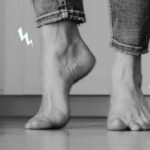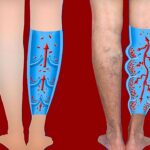A terminal disease or illness may be explained as a condition that cannot be cured and will lead to death. It is a life-threatening disease. However, if we talk about peripheral arterial disease, it is not an immediately life-harming or life-threatening disease, but the process may lead to fatal problems. However, some people have questions like; Is PAD a Terminal Disease?
A common condition where fatty deposits build up in the arteries restricting the blood flow is known as Peripheral Arterial Disease. Many people who suffer from PAD show no symptoms. However, the ones that do may relate to having extremely painful legs upon walking, hair loss, numbness, brittle and slow-growing nails, ulcers, changes in the appearance of the skin, and the shrinking of leg muscles.
This condition may be prevalent among aged people and is more common among men. People with very poor diets, smoke, and are obese are prone to developing peripheral arterial disease. People who do not exercise and have no such activity will also have a higher risk of developing this disease.
Treatments
The primary goal of treatment is to retain the blood flow and improve the patient’s health. The sufferer’s symptoms become stable with treatment, and the pain gets for many. Lifestyle changes and improved medication can largely treat this condition. Exercising regularly (for a minimum of 30 minutes a day), not smoking, and integrating high-nutrition food into your diet will be very helpful in treating PAD. It is also important to lose weight (if overweight or obese) and eat a healthy diet along with moderate or no consumption of alcohol.
The underlying causes of PAD also need treatment.
Conditions such as high blood pressure, diabetes, and high cholesterol levels may be underlying causes of PAD. This objective may be achieved by medication and surgeries in some cases. When these conditions are treated, the chances of curing PAD increase.
Complications of PAD
As we discussed earlier, PAD may or may not be fatal but can lead to fatal diseases. The complications and fatal diseases that are the result of PAD may be listed as follows:
Coronary Heart disease blockage of arteries and vessels will not always only impact the legs but may lead to impacts on the arteries supplying blood to the brain and the heart. So this will lead to coronary heart diseases, strokes, heart attacks, and even angina. These may lead to death.
CLI – Critical Limb Ischemia
CLI occurs when the flow of blood to the leg is restricted extremely. It, later on, poses serious conditions that will be very difficult to treat. If you notice symptoms that relate to CLI, you should consult your doctor on an immediate basis. Common symptoms of CLI include:
- Severe burning pain
- Pale, shiny, smooth, and dry skin
- Unhealable wounds and sores
- Loss of muscles
- Swelling and smelly pus in the lower limb and toes.
- Cooler skin in the body’s lower extremities, like toes and lower limbs. Cooler skin leads to numbness, and the skin of that area turns black after turning red.




